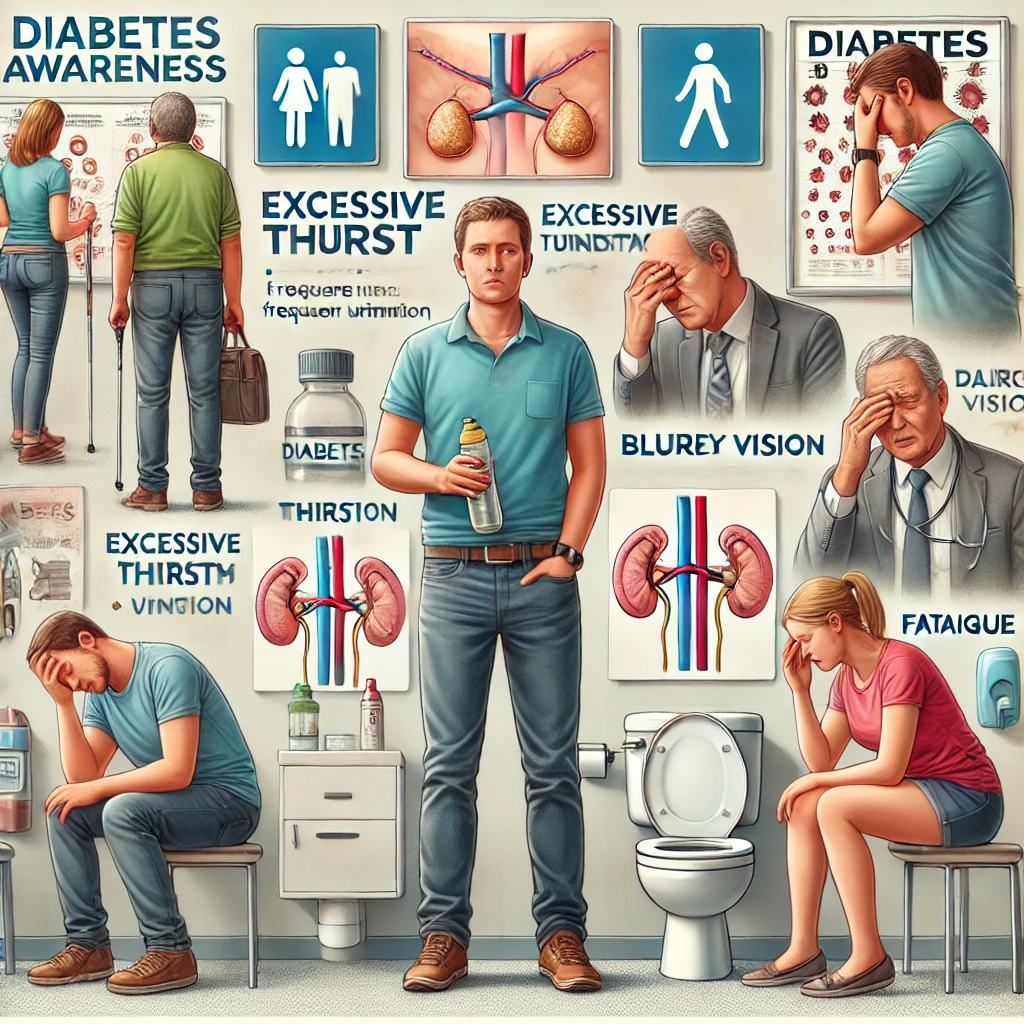
How to Identify Early Symptoms of Diabetes
Diabetes is a chronic condition that affects millions of people worldwide, often developing silently with subtle symptoms. Identifying early signs can prevent complications and enable timely management, ensuring better long-term health outcomes.
In this guide, we’ll explore the early symptoms of diabetes, what they mean, and when to seek medical advice. Whether you’re at risk of diabetes or just want to stay informed, recognizing the warning signs can make a significant difference in your health.
Introduction
Diabetes occurs when your body cannot effectively regulate blood sugar levels. The two main types—Type 1 and Type 2 diabetes—often present similar early symptoms, but they may progress differently. Early detection is key to managing the condition, as it helps prevent complications like heart disease, kidney issues, and vision problems.
Let’s delve into the symptoms and what they could mean for your health.
Why It’s Important to Identify Diabetes Early
- Prevent Complications: Early treatment reduces the risk of severe health issues.
- Better Management: Timely diagnosis allows for lifestyle changes that control blood sugar levels.
- Improved Quality of Life: Addressing symptoms early enhances overall well-being.
Common Early Symptoms of Diabetes
1. Frequent Urination (Polyuria)
One of the hallmark signs of diabetes is the need to urinate more often than usual.
Why It Happens:
High blood sugar levels force your kidneys to work harder to filter and absorb excess glucose, leading to increased urine production.
When to Be Concerned:
If you wake up multiple times during the night to urinate or experience an urgent need to go frequently.
2. Excessive Thirst (Polydipsia)
Feeling constantly thirsty, even after drinking plenty of water, can be an early sign.
Why It Happens:
Frequent urination leads to dehydration, which triggers excessive thirst as your body attempts to replenish lost fluids.
When to Be Concerned:
If your thirst persists despite drinking adequate amounts of water.
3. Unexplained Fatigue
Feeling unusually tired or lacking energy is another common symptom.
Why It Happens:
When your cells cannot access glucose for energy due to insulin resistance or lack of insulin, your body feels drained.
When to Be Concerned:
If fatigue interferes with your daily activities or persists even after adequate rest.
4. Blurred Vision
Difficulty seeing clearly can occur as an early warning sign of diabetes.
Why It Happens:
High blood sugar levels cause fluid to be pulled from the lenses of your eyes, affecting their ability to focus.
When to Be Concerned:
If vision problems come and go or worsen over time without a clear cause.
5. Unexplained Weight Loss
Losing weight without trying is a red flag, especially in Type 1 diabetes.
Why It Happens:
When your body cannot use glucose for energy, it starts breaking down fat and muscle instead, leading to weight loss.
When to Be Concerned:
If you lose more than 5–10% of your body weight within a few months without dieting or exercising.
6. Increased Hunger (Polyphagia)
Feeling unusually hungry, even after eating, may indicate blood sugar issues.
Why It Happens:
The body struggles to convert food into energy, making you feel hungry despite consuming enough calories.
When to Be Concerned:
If your hunger is constant and accompanied by other symptoms like fatigue or weight loss.
7. Slow Healing of Wounds
Cuts, sores, or infections that take longer than usual to heal can signal diabetes.
Why It Happens:
High blood sugar impairs blood flow and slows the healing process, making wounds more susceptible to infection.
When to Be Concerned:
If minor injuries take weeks to heal or show signs of infection.
8. Tingling or Numbness in Hands and Feet
Nerve damage, or diabetic neuropathy, can develop early in some cases of diabetes.
Why It Happens:
Excess glucose damages the nerves, leading to tingling, numbness, or a burning sensation, particularly in the extremities.
When to Be Concerned:
If symptoms persist or worsen over time.
Who’s at Risk for Diabetes?
- Type 1 Diabetes: Typically diagnosed in children or young adults; caused by the immune system attacking insulin-producing cells.
- Type 2 Diabetes: More common in adults and linked to lifestyle factors like obesity, inactivity, and poor diet.
- Gestational Diabetes: Occurs during pregnancy and increases the risk of developing Type 2 diabetes later.
High-Risk Groups:
- Family history of diabetes
- Overweight or obese individuals
- Sedentary lifestyle
- People over 45 years old
- Certain ethnicities (e.g., African American, Hispanic, Asian American, Native American)
Steps to Take If You Notice Symptoms
1. Schedule a Doctor’s Appointment
Your healthcare provider will likely perform:
- A Fasting Blood Sugar Test
- An A1C Test (measures average blood sugar over three months)
- A Glucose Tolerance Test
2. Make Lifestyle Changes
- Adopt a balanced diet rich in whole grains, vegetables, lean proteins, and healthy fats.
- Incorporate regular exercise into your routine, aiming for at least 30 minutes of moderate activity most days.
- Monitor your blood sugar levels if recommended by your doctor.
3. Consider Preventive Measures
If you’re at risk for diabetes, take steps to prevent it:
- Maintain a healthy weight.
- Reduce sugary and processed foods.
- Manage stress effectively.
Tips for Managing Early Symptoms
- Monitor Your Diet: Focus on low-glycemic index foods that stabilize blood sugar.
- Stay Active: Physical activity improves insulin sensitivity.
- Stay Hydrated: Drinking water helps flush excess glucose from your body.
- Sleep Well: Quality sleep regulates hormones affecting blood sugar levels.
- Regular Check-Ups: Visit your doctor for routine screenings if you’re at risk.